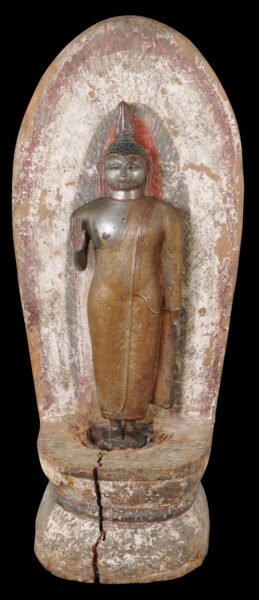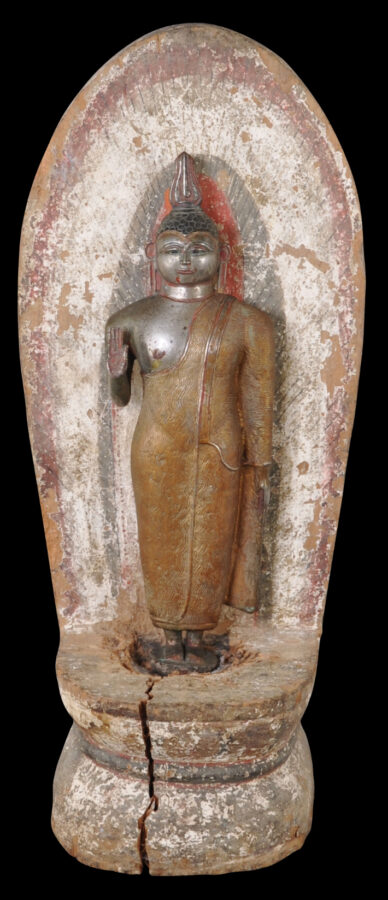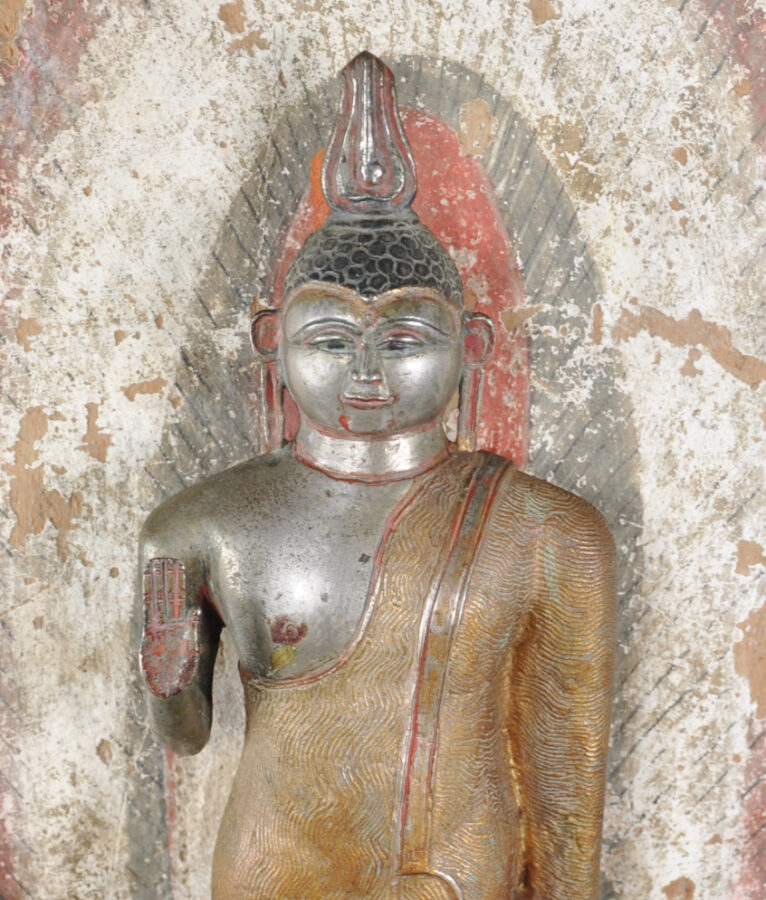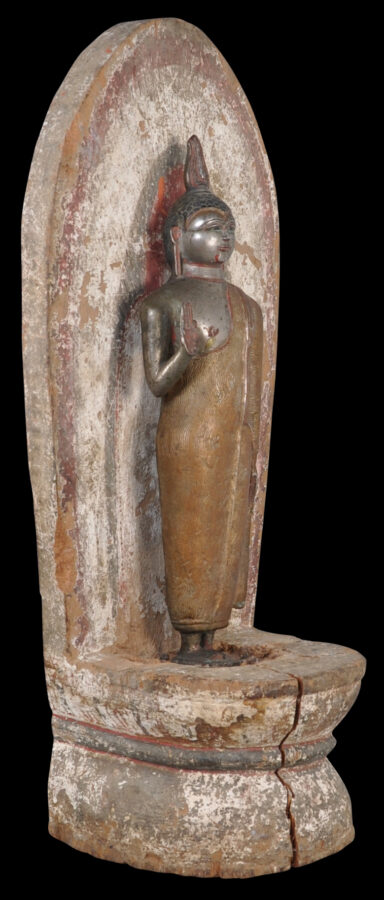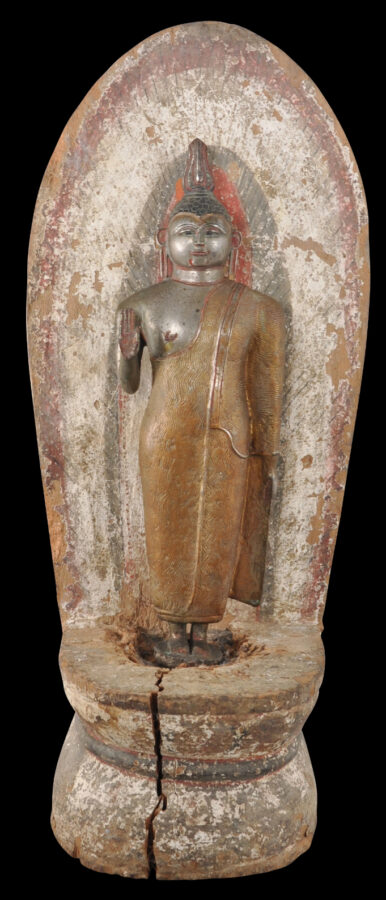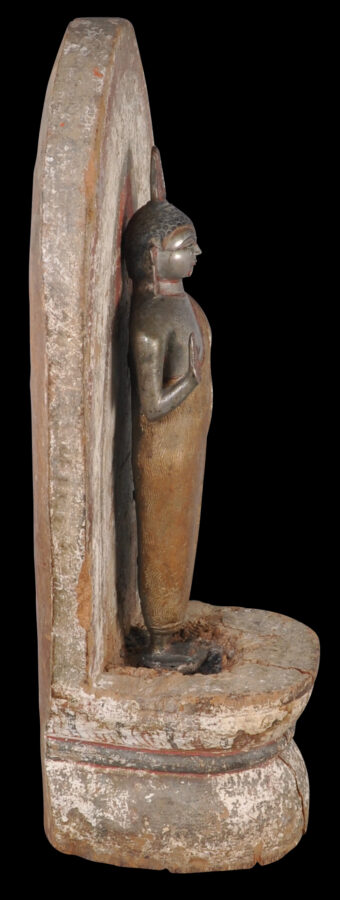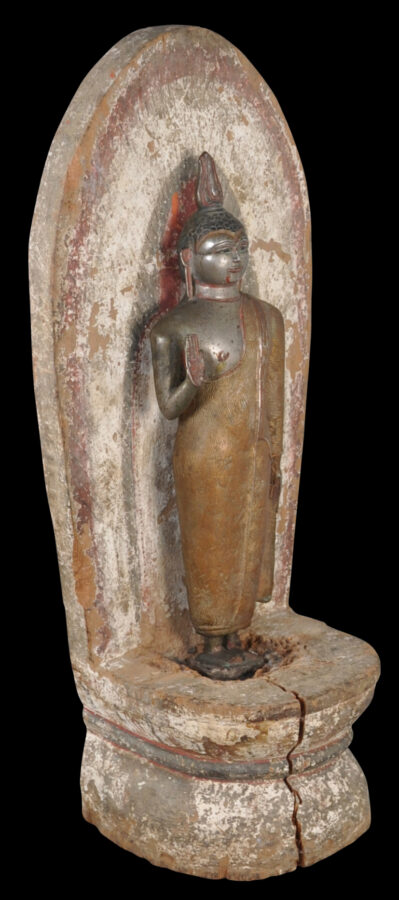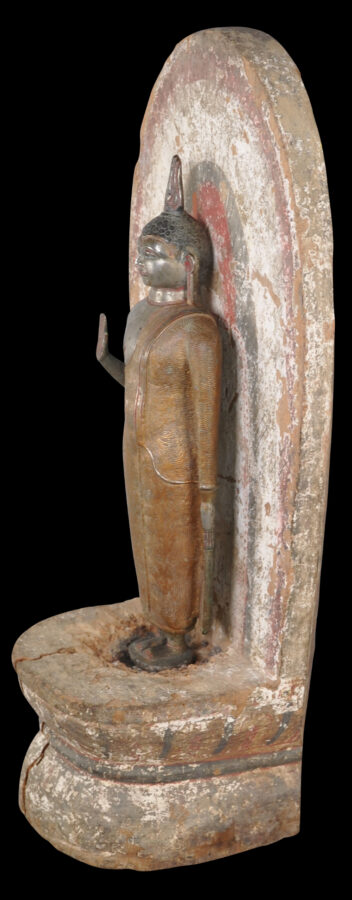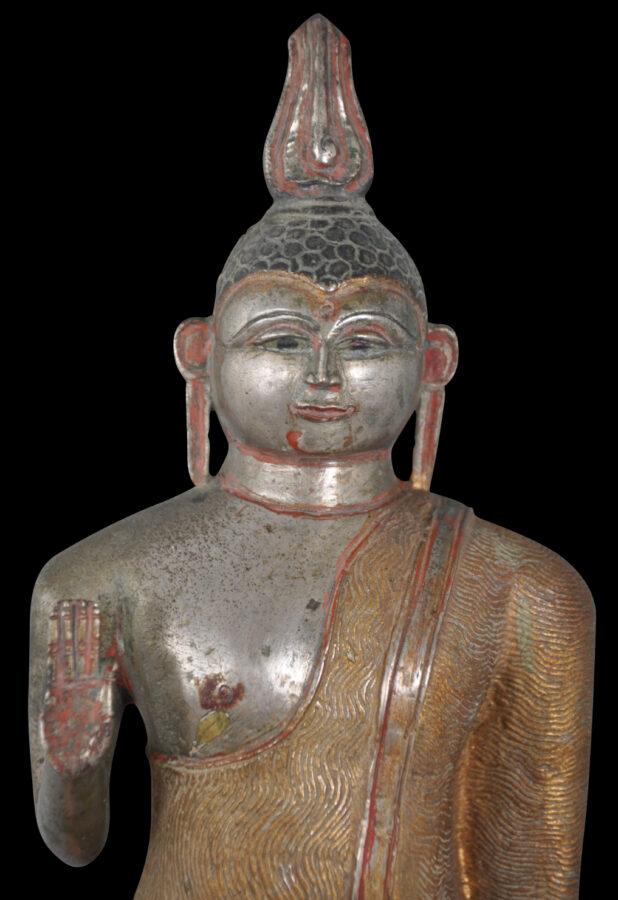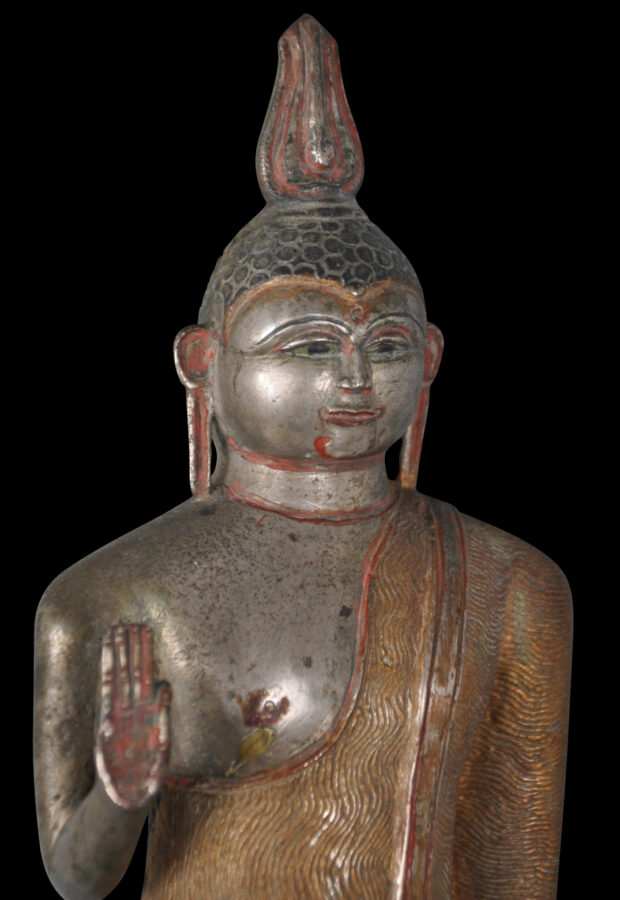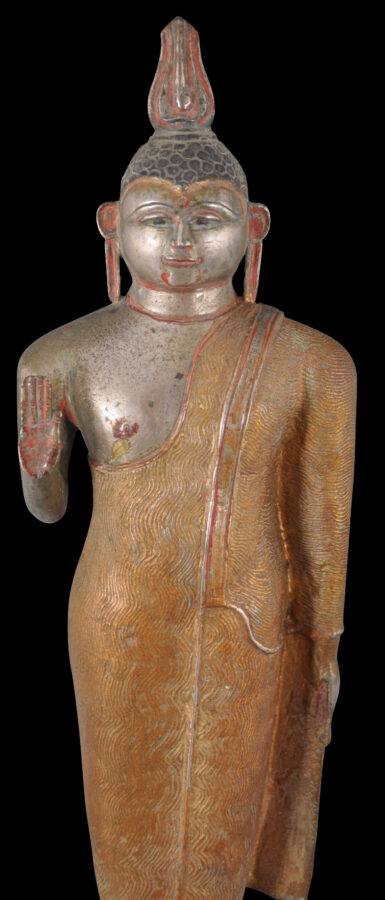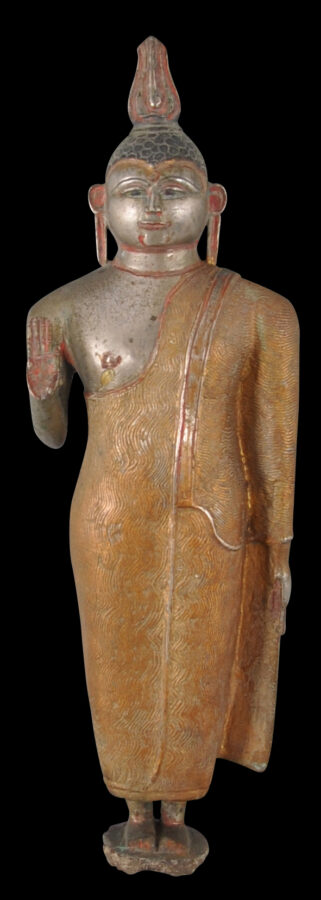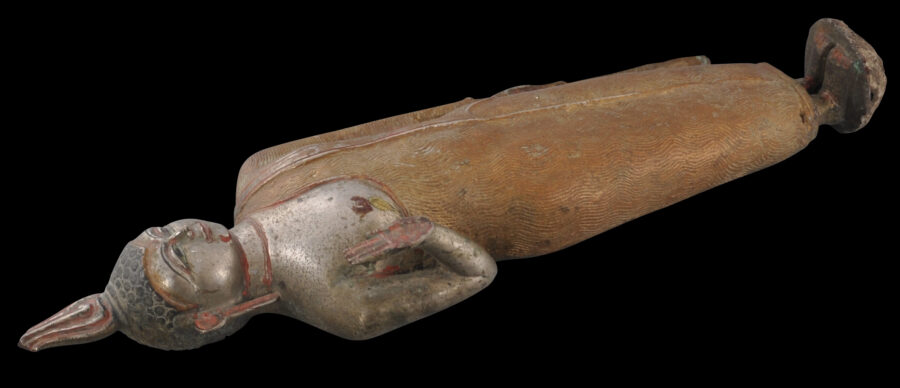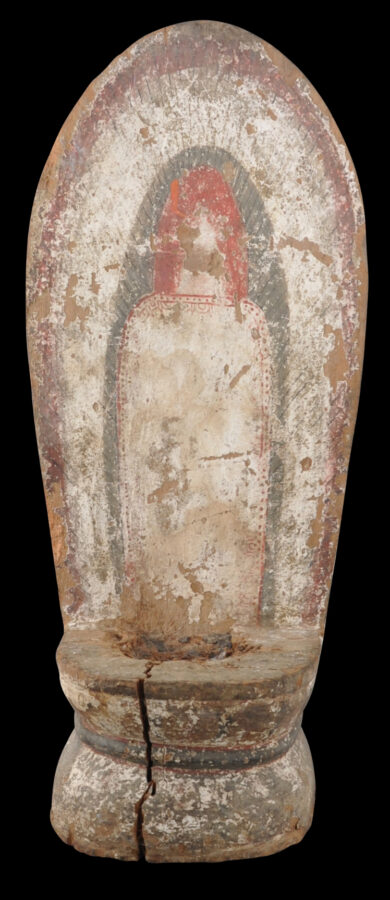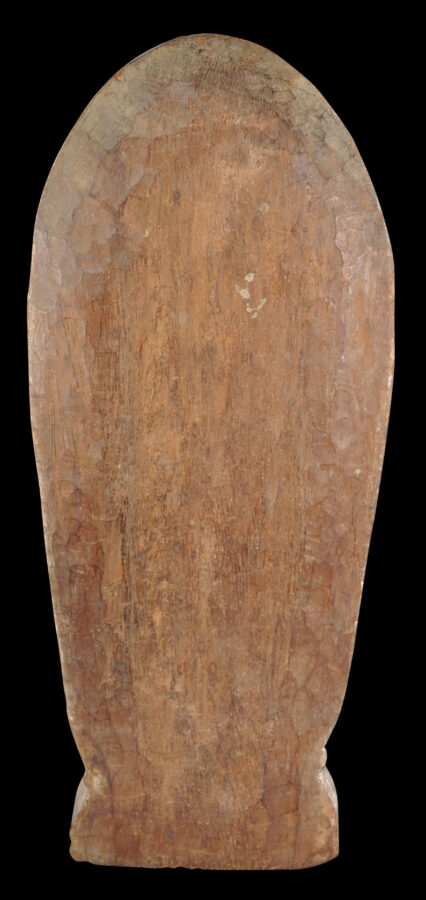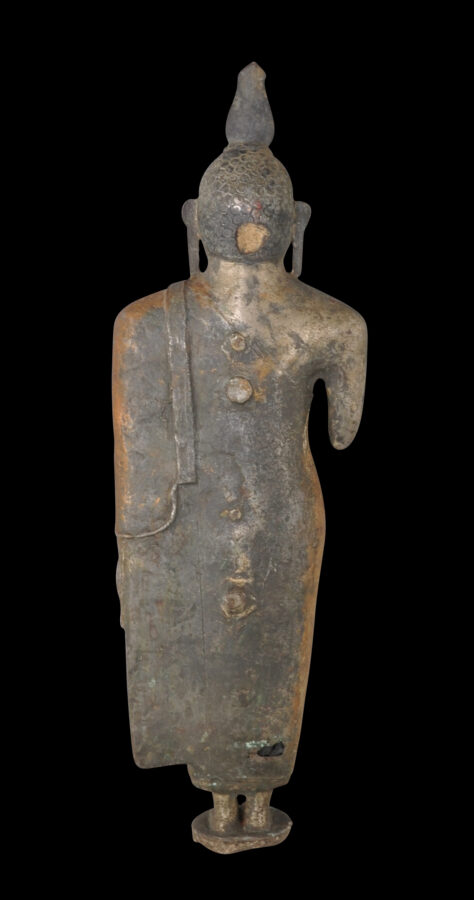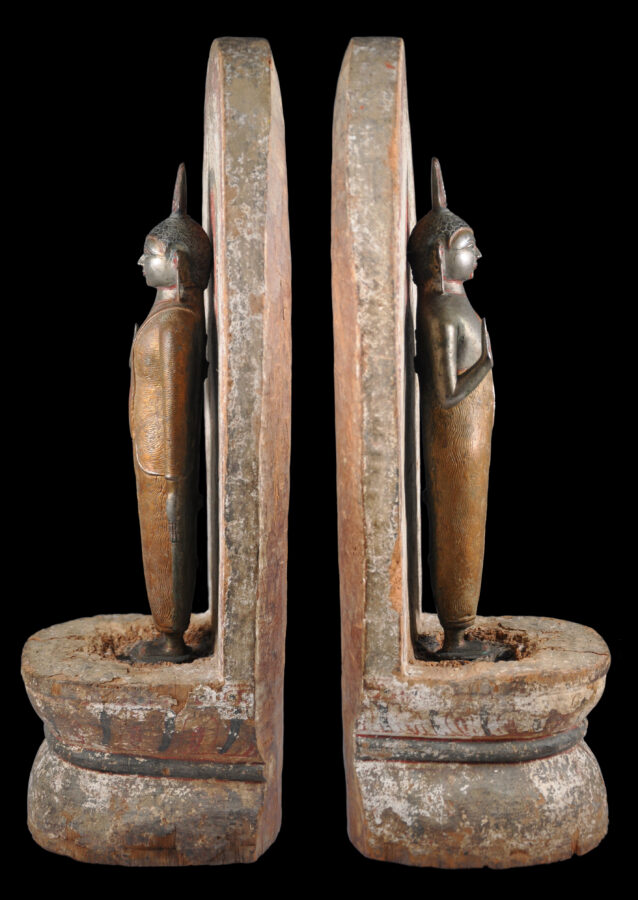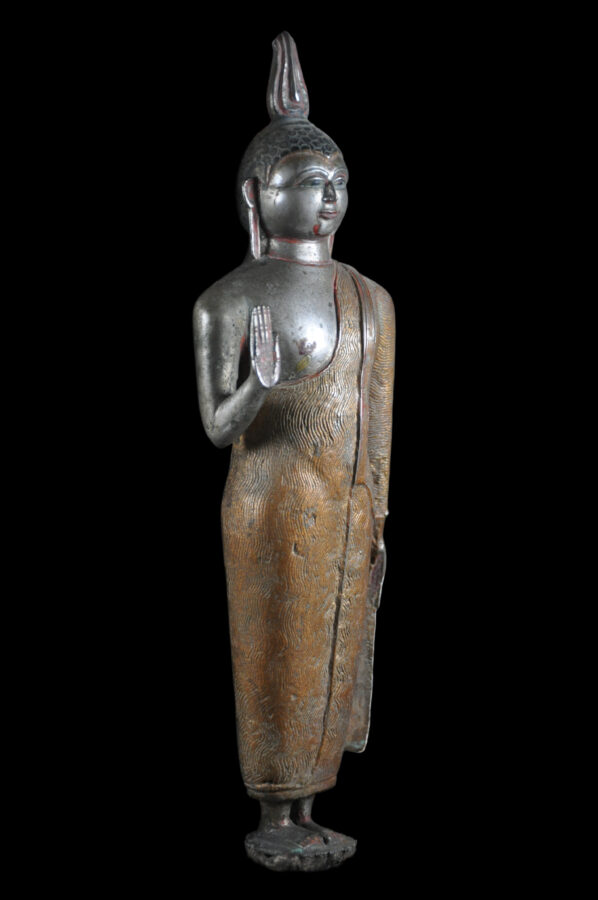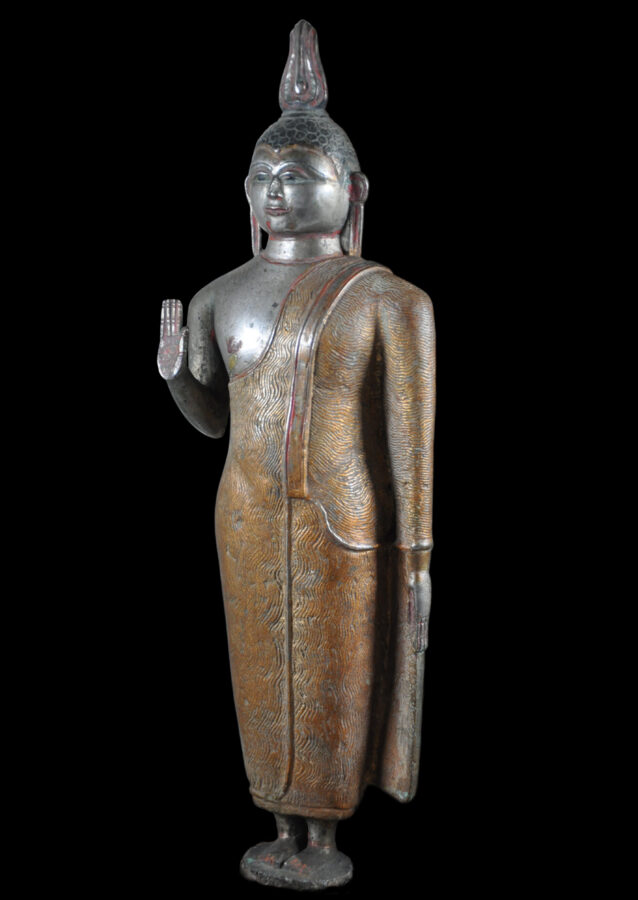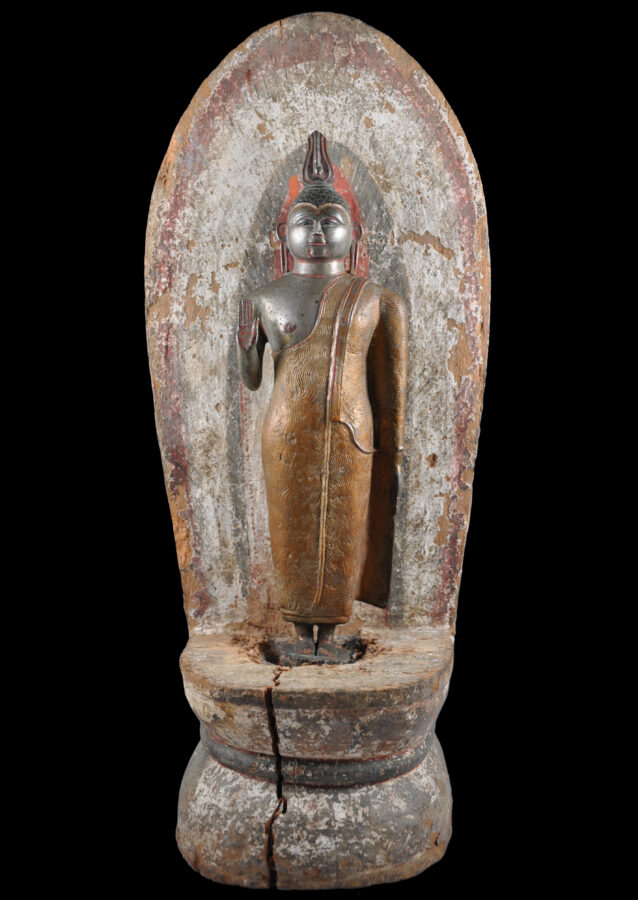Enquiry about object: 6970
Exceptional Kandyan Gilded & Silvered Brass Standing Buddha & Painted Wooden Stand
Kandy, Sri Lanka 18th century
height of wooden mount: 43.7cm, width: 19cm; height of statue: 28cm; weight of wooden mount: 1,923g, weight of statue: 1,625g
Provenance
UK art market
This exceptional and good-sized example of a Kandyan-style standing Buddha is finely cast in bronze. The rounded face with its fine features is particularly naturalistic – indeed unusually so. The use of paint to colour the features also is uncommon. The hair and pupils of the eyes have been coloured black and the elongated ears and lips have been painted red. Additionally, the Buddha’s skin has been silvered and his robes have been gilded.
The robes or civara are long and folded in a typical way for a Kandyan 18th century standing depiction of the Buddha. They are decorated with fine, wavy lines, front and back.
The Buddha stands with his right hand held aloft in the jnana mudra (‘teaching’) position.
The image has a prominent, flaming unisha or sirispata (crown protuberance), in a style that is typical of Sri Lankan Buddha images. The feet are rectangular, the right nipple is exposed, the shoulders remarkably broad and square, the face rounded with a wide nose and an almost single, eyebrow, and the head is decorated with large, darkened curls.
The image retains its original carved and painted wooden pedestal. The pedestal has much wear but is decorated in green, orange, white and black – the lines radiating from the Buddha’s body are still visible.
The bronze image stands on the pedestal but is not fixed to it. A recent large Sri Lankan standing Buddha from this period to have been auctioned can be seen here.
Unrest in Sri Lanka lead to a new style of Buddha image emerging under the Nayakkar kings of Kandy. A prominent feature of the new style was a renewed interest in the aesthetic value of the pleated robe. That style is exemplified by the image here whereby the robe has been given a shimmering zig-zag pattern.
The image was acquired in the UK and almost certainly has been in the UK since the colonial era.
References
Coomaraswamy, A.K., Bronzes from Ceylon, Chiefly in the Colombo Museum,Colombo Museum, 1914 (reprinted 1988).
Coomaraswamy, A.K., Mediaeval Sinhalese Art, Pantheon Books, 1956 reprint of the 1908 edition.
Phoenix Art Museum, Guardian of the Flame: Art of Sri Lanka, Phoenix Art Museum, 2003.
De Silva, P.H.D.H., A Catalogue of Antiquities and Other Cultural Objects from Sri Lanka (Ceylon) Abroad,National Museums of Sri Lanka, 1975.


